Masterpiece: what to look out for
We preview some of the highlights of Masterpiece this year, which include sculpture, fine furniture, porceline and a very special walking stick
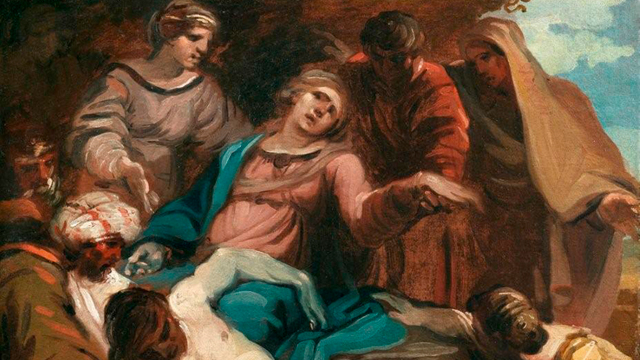

Swagger and style return to the grounds of the Royal Hospital Chelsea between June 26 and July 2 with the fifth staging of Masterpiece, the fair that combines art, antiques and contemporary design (020-7499 7470; www.masterpiecefair.com). Last year, the mixture was much better handled than in the first fairs, when the art, particularly the older art, had seemed overwhelmed by sheen and bling.
The numbers of exhibitors-close to 160-have held up, and there has been a much smaller turnover compared to last year, with about 90% returning. Slightly over one-third are from overseas and fine and contemporary art now make up about 12%. The impression is of a fair that is more confident in itself and its future.
Coaster carriage
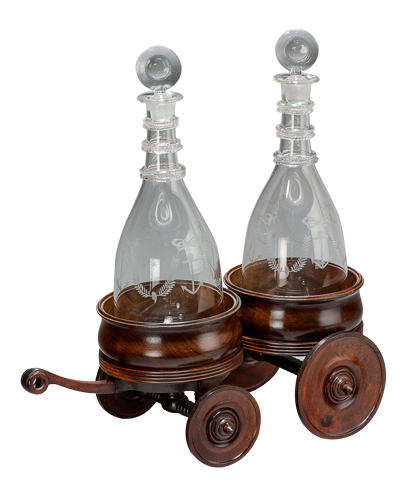
Thomas Coulborn & Sons has a near-irresistible toy for grown-ups: a 14in-long, English-made George III coaster carriage, about 1790
Extraordinary table
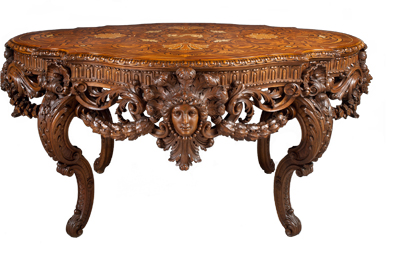
Chiale Antiquariato from Piedmont has an extraordinary table that could not be more typical of the taste of its time, about 1905. It was designed by Edoardo Smeriglio, artist, professor and antique dealer, for Sir Walter Becker, a ship-owner and later Fascist sympathiser, who furnished a remarkable house on the outskirts of Turin. He and his wife, Delfina (thus the dolphin motif), appear lightly disguised in a novel by D. H. Lawrence, who had stayed with them briefly. The table comes with a wealth of information unearthed by Dott. Cav Arabella Cifani
Medieval marble relief
Sign up for the Country Life Newsletter
Exquisite houses, the beauty of Nature, and how to get the most from your life, straight to your inbox.
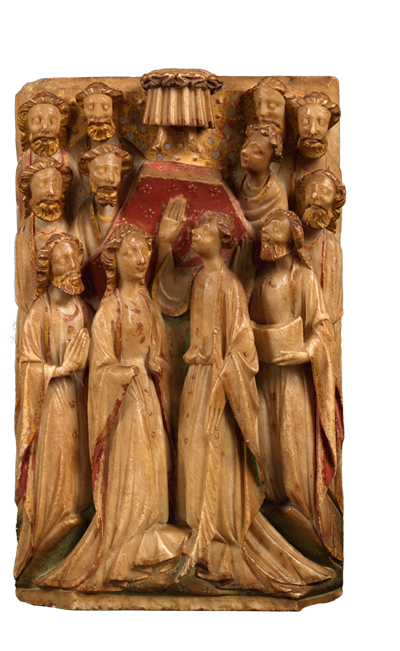
I suppose a purist might regret that so many 15th-century Nottingham alabaster reliefs have lost most of their original colour, but they would surely have looked garish to our eyes and, for me, the joy of the material is its near-translucence. This example, with Mullany of London, has enough colour and gilding to suggest what might have been without undue emphasis. The 151⁄2in-high relief shows the Ascension of Christ
Walking stick
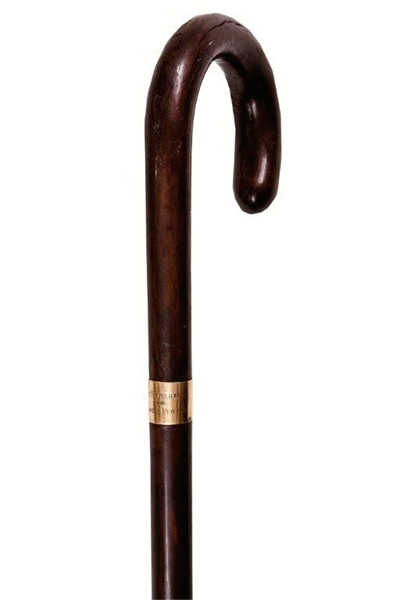
A walking stick, one might think, is not out of the ordinary, even when fitted with a gold band. This one, however, is inscribed: ‘Scott Fitzgerald From Maxwell Perkins', explaining why it is shown by Ursus Books
Giani picture
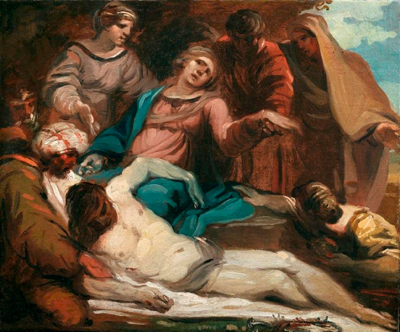
Alessandra di Castro from Rome has a 237⁄8in by 28.in Entombment of Christ by Felice Giani (1758-1823), which was painted towards 1800. Giani was a sublime draughtsman and a genius in the art of fresco, but he was also a magnificent easel painter. Here, he is subverting the orthodox Classicism of David (derived from Raphael), by raising the ‘unfinished' to a work of art on its own terms
Hellenistic marble relief
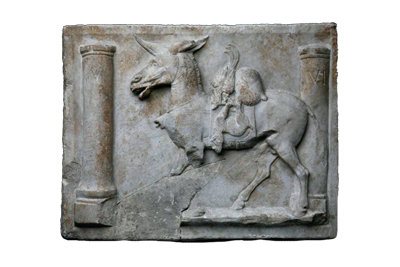
A 161⁄8in-high Hellenistic marble relief of a mule, 2nd-1st century BC, with Galerie Chenel from Paris, one of my favourite dealers in early works of art. It probably represents the fifth month of one of the Greek calendars, perhaps November-December in the Attic version, as the high relief shows the braying mule between two milestone columns, one inscribed with a Roman numeral V, the other with VI, and laden with a pheasant, trussed goat and filled wineskin upon a fringed saddle cloth strung on his back. It belonged to Dr Arnold Ruesch, who was a Swiss industrialist, philosopher and avid collector of antiquities, who, in 1920, commissioned a Pompeiian-style home on the Zürichberg to house them
Miniature portrait of Handel
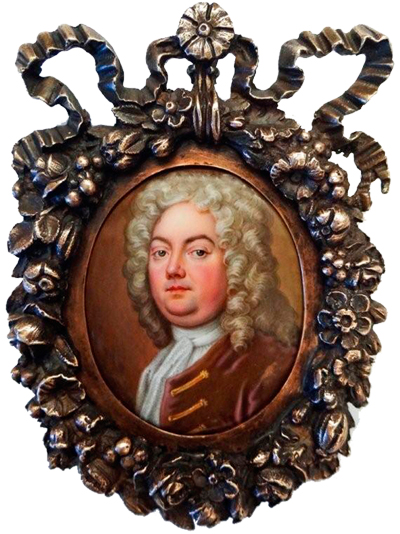
It was natural enough that George Frideric Handel, in some ways the most English of composers, but nonetheless a native of Germany, should have sat for Christian Friedrich Zincke (1683- 1767), for this 1.in-high miniature portrait. Zincke, from Dresden, had settled in London six years before the composer and, by 1718, had become the most successful miniaturist of the day. This was brought back to Britain after 50 American years by Elle Shushan of Philadelphia
Silver dinner service
A sample of a magnificent silver dinner service, commissioned by the people of Liverpool from Paul Storr. It was presented to Sir John Gladstone (1764-1851), father of the future Prime Minister, on Monday, October 18, 1824, to celebrate his role in the promotion of the trade and commerce of the city. With Koopman Rare Art
Sculpture
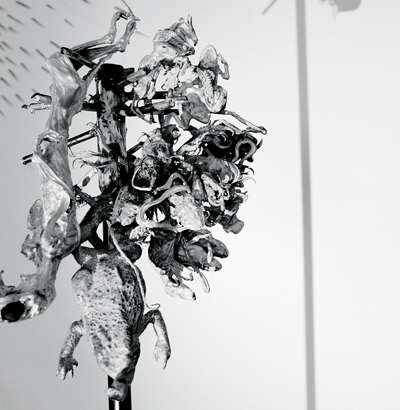
This is a fair at which contemporary makers may unveil their latest work, and one such is Blain|Southern, in its case of a work specially conceived for the occasion. The Masterpiece is a sterling-silver sculpture made from casts of dead creatures by Tim Noble and Sue Webster. It comes with a light projector, as the point is the shadow, which forms a silhouette portrait. Although they had not previously heard of him, the artists now recognise a descent from Archimbaldo
Porcelin vases
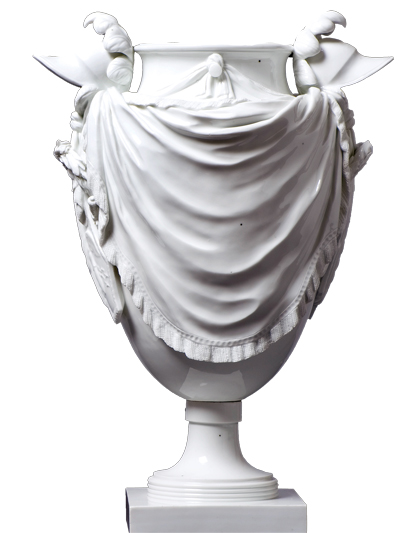
Daniela Kumpf of Wiesbaden has a surprising pair of Russian Imperial Porcelain Manufactory vases, made by August Karl Spiess in 1895-1900. Although decorated with ancient Roman military iconography, they actually celebrate the invention of wireless telegraph transmission, recording a transformative moment in the history of broadcasting. Beneath the handles are trophies incorporating a shield with the lightning-bolt logo of the Russian Radio Telegraphy Company, known as Spark Telegraph
Rare bird books
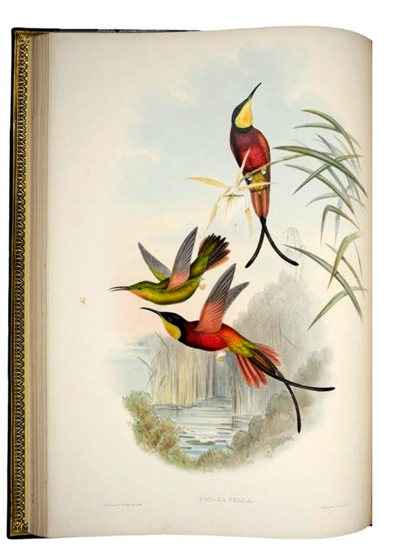
John Gould was not only one of the most distinguished ornithologists of the 19th century, he was also a notable artist and publisher. Bernard Shapero has a complete set of his magnificent bird books; such a collection has not been offered privately for many years. Described as ‘exceptional and pristine', the 12 folio works in 44 volumes contain more than 3,000 fine handcoloured lithographs all in contemporary gilt bindings
Delaroche Portrait
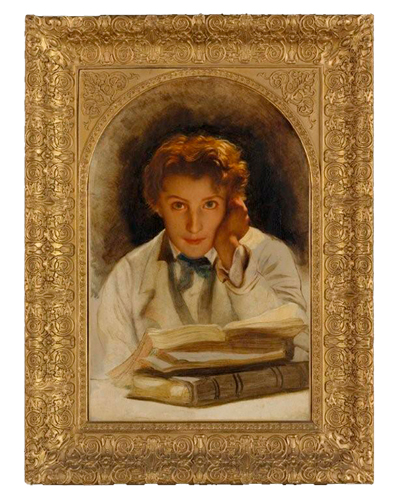
A touching 247⁄8in by 161⁄8in portrait of his son by Paul Delaroche, Joseph- Carle-Paul-Horace Delaroche, 1851, celebrates the boy's recovery from a serious illness when he was 15. Now full of life, he stares intensely at the viewer, who, by proxy, represents the artist/father. With Philip Mould
Schembart Book
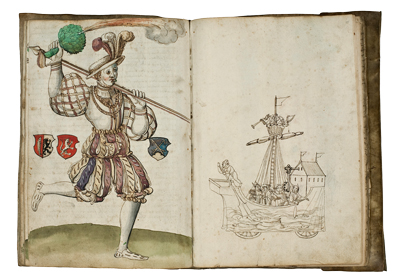
The Schembart book celebrates the end of Carnival and the beginning of Lent. It originated among the butchers of Nuremberg in 1349, who wore elaborate masks-the Schembart- and were protected by runners in extravagant costumes and bells, as they ran through the streets brandishing exploding lances and leaf bouquets. The festival remained popular throughout the 16th century until it became so subversive and violent that it was abolished in 1539. Produced in small editions, spectacular illustrated festival manuscripts capture the splendid ephemeral art and architecture that were once the centerpieces of grand celebrations and holidays. Schembart books have long been coveted by rare-book collectors for the immediacy of their descriptions. With Les Enluminures
Japanned cabinet
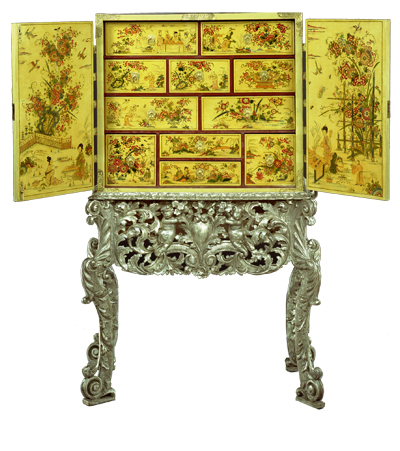
A very rare and superb late-17th-century cream japanned cabinet on a carved silvered stand, with Ronald Phillips. It is decorated throughout with exotic and brilliant polychrome scenes and has two folding doors, each with a central blue-and-white vase filled with chrysanthemums and exotic flowers above Oriental courtly ladies and children in a landscape.
The elaborate pierced repoussé gilt hinges and metalwork at the corners and the lock plate fully live up to such grandeur. Cream or white japanning are the rarest colours to be found and only a very small number of workshops managed to produce pieces in these hues. The patterns for the decoration were often traced from Chinese or Japanese import china of the period
Small swords
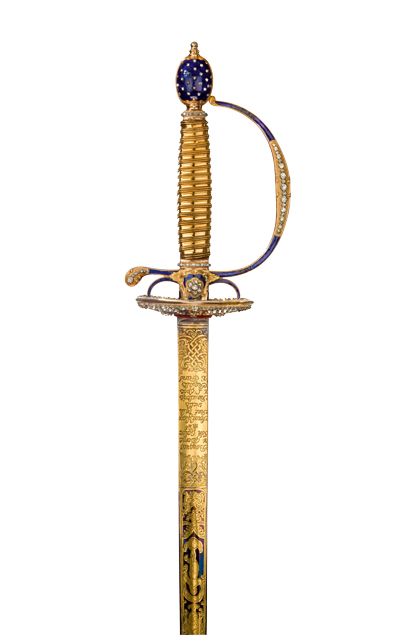
Peter Finer deals not in the pity of war, but in its beauty, and here, he has a selection of remarkably beautiful French small swords dating from just before the revolution. He tells us that the majority of such intricate hilts were made by fourbisseurs (sword cutlers), whose corporation had obtained the rights for them to make gold and silver hilts in 1627, on the condition that the precious metals were purchased from goldsmiths. The signature of the fourbisseur etched on the blade of this magnificent sword is for Bougues & Giverne of the ‘rue de la vielle boucherie à l'epée royale à paris'. It is just possible, because of its provenance, that the original owner was the vicomte de Beauharnais, guillotined husband of the future Empress Joséphine
John Piper picture
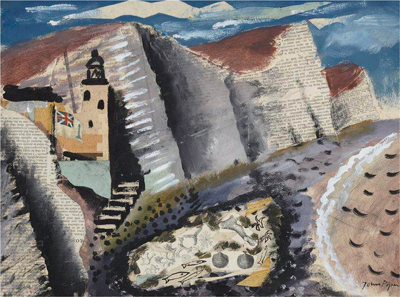
John Piper (1903-92) Beach and Star Fish, 1933-4, gouache, pen and ink with a collage of paper and fabric, measuring 151⁄8in by 195⁄8in. There is a further, abandoned study of a beach scene in the same media on the reverse. I like this greatly. It is a demonstration of Piper's return to landscape after his brief flirtation with fashionable abstraction. With Offer Waterman
Cabinet/Dressing table
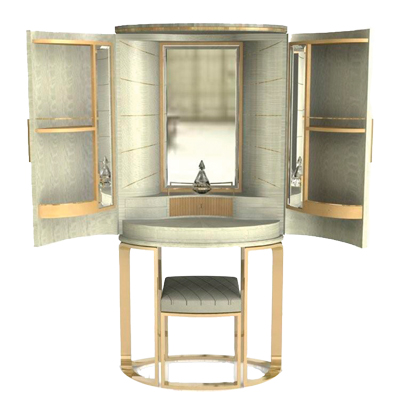
Like Blain|Southern, LINLEY uses the fair for a launch, with the lovely ‘Grace' cabinet/ dressing table, a shimmer of grey eucalyptus faceted to create a velvety quilted effect. Innovative techniques have been employed to produce this unusual and intriguing finish. The dove grey of the sculptural veneer oozes sophistication, reflecting the light to glisten like a cut diamond. Accentuating the curves by providing a contrast both in material and colour, the rich gold-plated frame, handles and stringing add a lustrous and opulent touch
Bracelets
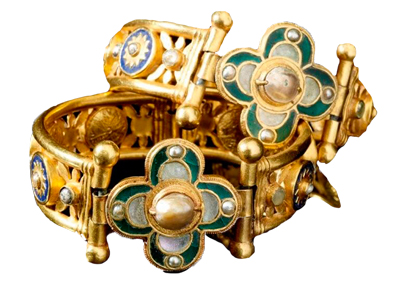
I often write about De Backker of Hoogstraten when it shows medieval art in Brussels. It is a pleasure to do so on its London visit. It moves back in time with these exceptional Byzantine gold, pearl and coloured-glass bracelets. The sophistication of the technique, together with their form and design, suggests that these came from a workshop that carried out commissions for the Emperor. This assumption further rests on a comparison with jewellery worn by the ladiesin- waiting of Empress Theodora (about AD500-548) in the mosaic in San Vitale, Ravenna.
* Follow Country Life magazine on Twitter
* Subscribe to Country Life and save
Country Life is unlike any other magazine: the only glossy weekly on the newsstand and the only magazine that has been guest-edited by HRH The King not once, but twice. It is a celebration of modern rural life and all its diverse joys and pleasures — that was first published in Queen Victoria's Diamond Jubilee year. Our eclectic mixture of witty and informative content — from the most up-to-date property news and commentary and a coveted glimpse inside some of the UK's best houses and gardens, to gardening, the arts and interior design, written by experts in their field — still cannot be found in print or online, anywhere else.
-
 Vertigo at Victoria Falls, a sunset surrounded by lions and swimming in the Nile: A journey from Cape Town to Cairo
Vertigo at Victoria Falls, a sunset surrounded by lions and swimming in the Nile: A journey from Cape Town to CairoWhy do we travel and who inspires us to do so? Chris Wallace went in search of answers on his own epic journey the length of Africa.
By Christopher Wallace
-
 A gorgeous Scottish cottage with contemporary interiors on the bonny banks of the River Tay
A gorgeous Scottish cottage with contemporary interiors on the bonny banks of the River TayCarnliath on the edge of Strathtay is a delightful family home set in sensational scenery.
By James Fisher